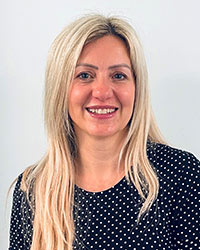Lymphocyte PHA/OKT3 Response, Lymphocyte Proliferation
Immunology
Description
In vitro lymphocyte proliferation are used exclusively to diagnose immunodeficiency states. Primary immune deficiencies can be classified into antibody deficiencies, defects of cell mediated immunity, and deficiencies associated with other defects (ie. genetic mutations). In these situations the response of lymphocytes to mitogen stimulation has been reported to be absent, reduced or normal [1]. Clinical situations which give rise to secondary immunodeficiency are marrow disorders (such as hypoplasia, bone metastases and myelosclerosis), nephrotic syndrome, protein-losing enteropathy, myotonic dystrophy, prolonged uraemia, gluten sensitive enteropathy, severe infection and B-cell neoplasia. Lymphocyte stimulation refers to an in-vitro correlate of an in-vivo process that regularly occurs when antigen interacts with specifically sensitised lymphocytes in the host. Lymphocyte transformation is a nearly synonymous term describing the morphologic changes that result when small, resting lymphocytes are transformed into lymphoblasts on exposure to the mitogen e.g. phytohaemagglutinin (PHA) or antigen e.g. Candida. Mitogens are substances that stimulate large numbers of lymphocytes in an antigen-non-specific manner, cause a myriad of complex biochemical events following incubation, one of which is an increase in DNA synthesis. Antigens cause an increase in DNA synthesis in pre-exposed individuals. Measurement of DNA synthesis is the basis of the mitogen stimulation test. After incubation the cells are pulse labelled with tritiated thymidine, the amount of tritiated thymidine that becomes incorporated into the newly synthesised DNA reflects the rate of proliferation. This is measured by scintillation counting. Other readouts (including cell surface activation markers have proved less satisfactory in our hands). The routine mitogens used are PHA (phytohaemaggultin), and OKT3, (anti-CD3 monoclonal antibodies) which stimulate T cell activation and thus gives an indication of T cell function. Defects in T cell function may be observed in conditions such as ataxia telangiectasia, DiGeorge syndrome, NEMO deficiency, SCID, Wiscott-Aldrich syndrome, X-linked hyper IgM syndrome and HIV [1,2]. Other mitogens can be performed if required; PMA (phorbol myristate acetate), ConA (concanavalin A) and PWM (poke weed mitogen). HSV (herpes simplex virus) and Candida are recall antigens that can be tested to determine if the patient has maintained specific antigen recognition.
Indications
Primary/Secondary Immunodeficiency.
Sample Type
Fresh heparin (unpreserved) whole blood (10-20ml). Fresh is <2hrs from venepuncture. A control sample of 10-20mL of blood in heparin (unpreserved) taken at the same time as the patient sample should be used in every test. Unpreserved heparin tubes should be obtained from the Immunology department. Requests from outside Sheffield: Please discuss sample requirements/transport feasibility.
Reference Range
See report
Turnaround Time
Within 1 week
Testing Frequency
By arrangement only.
External Notes
These tests are pre-booked by the requestor speaking personally to Dr G Wild, K Atkinson, or the Duty Clinical Scientist. Please discuss with Clinical Scientists if you require unpreserved heparin tubes for sample collection. The assays are performed on Monday, Tuesday or Friday because of the incubation period required for a particular mitogen, unless there are exceptional circumstances. Date and time the sample was taken should be recorded on the request form.
References
Stone KD, et al. Analysis of in-vitro lymphocyte proliferation as a screening tool for cellular immunodeficiency. Clin Immunol. 2009. 131:41-49. [Ref 1]
Rose, Hamilton, Detrick. Manual of Clinical Laboratory Immunology. 6th Edition. 2002.Buckley RH. Primary cellular immune deficiencies. J Allergy and Clin Immunol. 2002. 109(5):747-757. [Ref 2]
Weichert H, Lehmann J, Ambrosius H. Culture and stimulation of human T- and B-lymphocytes. Biomed Biochim Acta. 1990. 49(10):999-1004.
Gelfand EW, Cheung RK, Mills GB, Grinstein S. Mitogens trigger a calcium-independent signal for proliferation in phorbol-ester-treated lymphocytes. Nature. 1985. 315(6018):419-420.
Keller SE, et al. Comparison of a simplified whole blood and isolated lymphocyte stimulation technique.Immunol Commun. 1981. 10(4-5):417-431.
See Also
Immunoglobulins
Please note: the above information is subject to change and we endeavour to keep this website up to date wherever necessary.
Your contact for this test

Clare Del-Duca BSc (Hons) Biomedical Science, MSc Pathological Science
Laboratory Manager - Immunology and Protein Reference Unit
You are enquiring about
Lymphocyte PHA/OKT3 Response, Lymphocyte Proliferation